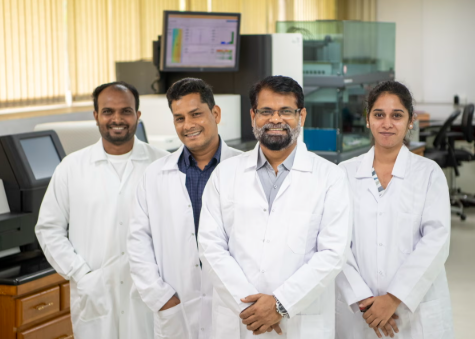Wednesday, 3 December 2025

In a breakthrough that could rewrite the future of pulse production in South Asia, scientists at the International Crops Research Institute for the Semi-Arid Tropics (ICRISAT) and the Indian Council of Agricultural Research (ICAR) have identified a resistance gene that could shield pigeonpea farmers from devastating yield losses caused by Sterility Mosaic Disease (SMD).
The discovery of Ccsmd04—a gene linked to high-level resistance—marks a turning point for one of India’s most economically and nutritionally important crops. The disease, transmitted by microscopic mites, can wipe out up to 90 per cent of a farmer’s pigeonpea harvest, crippling incomes and threatening food security.
“This is a landmark discovery, considering the severity of SMD in the region,” said Dr Himanshu Pathak, Director General, ICRISAT. “The identified genetic variants, genes, and markers hold immense potential for breeding more resistant pigeonpea varieties.”
Precision Science Meets Farmer Reality
The research was led by Dr Manish K. Pandey, Principal Scientist – Genomics, Pre-breeding & Bioinformatics at ICRISAT, in close collaboration with the Indian Institute of Pulses Research (IIPR) in Uttar Pradesh, Dr Rajendra Prasad Central Agricultural University (RPCAU) in Bihar, and the Indian Agricultural Research Institute (IARI) in Assam. By combining expertise in genomics, phenomics, and high-powered computational analysis, the team compared the genomes of two contrasting pigeonpea varieties—‘Asha’ (ICPL 87119), an ICRISAT-bred SMD-resistant variety, and ‘Maruti’, which is susceptible. They also analyzed a targeted genetic population displaying extreme resistance or susceptibility to SMD.
The result was the identification of ccsmd04, a gene producing a dormancy/auxin-associated protein. In susceptible plants, four frameshift mutations disrupt the function of this protein—providing breeders with a precise genetic target to safeguard yields.
From Lab to Field — Faster than Before
For decades, SMD has outpaced breeders due to the variability of both the virus and its vector. While resistant varieties existed, they often failed under real-world farm conditions. Now, the team has validated four functional InDel markers linked to the gene, enabling early-generation selection in breeding programs and significantly accelerating the development of resistant varieties.
“This discovery not only gives breeders a high-confidence target but also opens doors to gene editing and the use of wild relatives for stronger, more durable resistance,” said Dr Pandey.
Partnership Power & Policy Impact
ICRISAT’s work on SMD stretches back to 1975, but this milestone is the result of decades of sustained collaboration with ICAR, supported by CGIAR and the Bill & Melinda Gates Foundation.
“Our genomics and pre-breeding program is about integrating science into farmer-ready solutions,” said Dr Stanford Blade, Deputy Director General – Research & Innovation, ICRISAT. “Disease resistance isn’t just a plant trait—it’s a safeguard for livelihoods and the environment.”
With India targeting self-sufficiency in pulses, the discovery could sharply reduce pesticide use, stabilize farm incomes, and strengthen production of a crop that is critical to protein security and soil health.